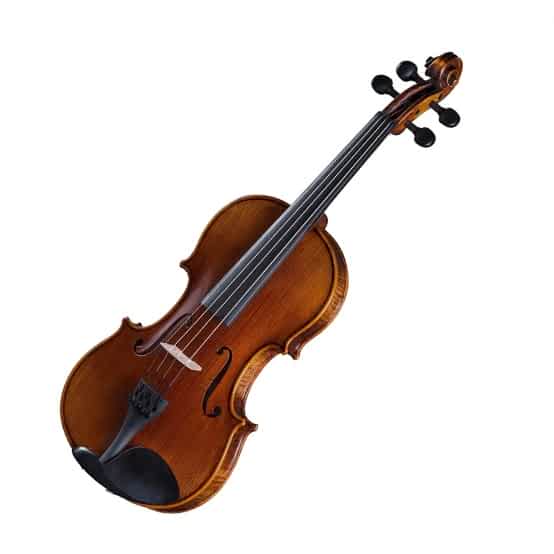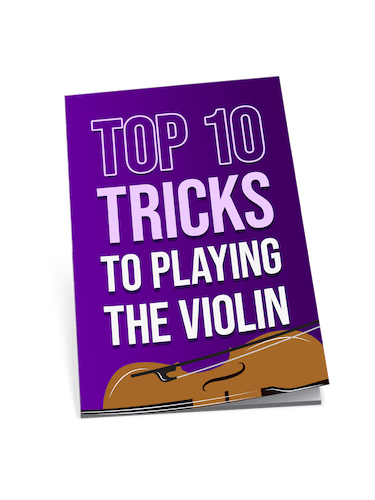Best
Violin for Beginners
-
Overall: High-quality construction and materials for a mid-range violin
-
Best Feature: Rich, resonant tone that's great for a variety of musical styles
-
TedScore™: 9/10
Best
Cello for Beginners
-
Overall: Warm, resonant tone that's great for a variety of musical styles
-
Best Feature: Ebony fingerboard, fittings, and tailpiece for durability and a smooth playing experience
-
TedScore™: 9/10
Best
Acoustic Guitar for Beginners
-
Overall: Affordable price point for a beginner or intermediate player
-
Best Feature: Slim "C"-shaped neck for comfortable playing
-
TedScore™: 9/10
Ever tugged a guitar string and heard the universe hum along? **That’s the enchantment** of string instruments! Dive into the ultimate String Instruments List that’ll snag your curiosity.
Click here to explore amazing sounds and stories!
From the deep, resonant cello to the cheerful twangs of a banjo, these instruments are the heart and soul of many musical ensembles. They work by vibrating strings, each an open door to a world of beautiful sound.
What’s even more amazing? You’ll discover how these incredible instruments have the power to transform sound, filling concert halls and cozy campfires with their unique melodies. By the end of this article, you’ll be familiar with the world of string instruments — and who knows, maybe you’ll be captivated by their magic and eager to try one out for yourself!
What are String Instruments?
String instruments, or chordophones, are musical instruments that produce sound from vibrating strings.
When performers play or sound strings, they vibrate and produce unique sounds.
These instruments are typically made of wood and come in various sizes and shapes. The strings are made of materials like nylon, steel, and gut. Some of them are plucked instruments, while some are played by drawing a bow across them.
Four main string instruments – violin, viola, cello, and double bass – differ in size and sound.
Also, other string instruments, like the harp, produce music by plucking strings or hitting them with a hammer.
Categorization of String Instruments Based on Size and Shape
String instruments come in different sizes and shapes, and they’re categorized based on these factors. Here are the classifications:
Violin Family
This includes the smallest string instrument, the violin. The viola and the cello follow it. The double bass is also sometimes included in this group.
Guitar Family
This group includes the guitar, bass guitar, and ukulele. The guitar comes in different sizes, such as the classical, acoustic and electric guitar.
Harp Family
The harp is the most popular string instrument in this category, and it comes in different sizes, such as the lever harp and the pedal harp.
Lute Family
This group of stringed instruments includes the lute, the mandolin, and the banjo. These instruments have rounded bodies and long necks.
List of Common String Instruments
Looking to expand your musical horizons? Then check out our comprehensive list of string instruments here!
Violin
1. Violin - a high-pitched instrument with four strings that is played with a bow and is commonly used in classical music.
Cello
2. Viola - similar to the violin but larger and with a deeper tone, often used to play harmony in orchestral music.
Cello
3. Cello - a large instrument that is played while seated and produces a rich, deep sound that is often used in classical and jazz music.
Double bass
4. Double bass - the largest and lowest-pitched instrument in the string family, commonly used in jazz and orchestral music.
Guitar
5. Guitar - a versatile instrument with six strings that can be played with fingers or a pick, used in a wide range of musical styles.
Bass Guitar
6. Bass Guitar - a four-stringed instrument similar to the guitar but produces lower-pitched notes, commonly used in rock, pop, and jazz music.
Banjo
7. Banjo - a stringed instrument with a long neck and a round body, commonly used in bluegrass and folk music.
Mandolin
8. Mandolin - a small, high-pitched instrument with four pairs of strings that is played with a pick, commonly used in folk and bluegrass music.
Harp
9. Harp - a large instrument with many strings plucked to produce a beautiful, ethereal sound, commonly used in classical and Celtic music.
Ukulele
10. Ukulele - a small, four-stringed instrument commonly associated with Hawaiian music but also used in pop and folk music.
Sitar
11. Sitar - a long-necked instrument with a large, round body and many strings, commonly used in Indian classical music.
Balalaika
12. Balalaika - a triangular-shaped instrument with three strings that is commonly a solo instrument used in Russian folk music.
Bouzouki
13. Bouzouki - a Greek instrument with a long neck and four pairs of strings, commonly used in Greek folk music.
Zither
14. Zither - a flat, stringed instrument played by plucking the strings with the fingers, commonly used in folk music.
Erhu
15. Erhu - a Chinese instrument with two strings that is played with a bow and produces a unique nasal sound that is commonly used in Chinese classical and folk music.
Recommended String Instruments for Beginners

PERFECT FOR: players of all ages and skill levels
FEATURES: Hand-carved solid spruce and solid maple body
OTHER INFO: Ebony fittings, including the fingerboard, pegs, chinrest, and tailpiece
Cremona SV-500 Premier Artist Violin
When you check the price above, you’ll see there are loads of great places to buy this item. Our personal favorite is Gear4music.
It is the largest music retailer in the UK and fast becoming the most respected online music shop in the US too. Their customer service is excellent, they have competitive prices, really fast shipping, and usually have the longest guarantee.
Most professional musicians use Gear4music, so there is no reason why you shouldn’t too!
- High-quality construction and materials for a mid-range violin
- Rich, resonant tone that's great for a variety of musical styles
- Expensive
The professional musician who wrote this article combined many things,
from the product build, manufacturer’s reputation through to feedback
from other users, to create our famous TedScore™.

PERFECT FOR: beginner players
FEATURES: Hand-carved solid spruce top and solid maple back and sides for a warm, resonant tone
OTHER INFO: Ebony fingerboard, fittings, and tailpiece for durability and a smooth playing experience
Stentor Student Cello I
When you check the price above, you’ll see there are loads of great places to buy this item. Our personal favorite is Gear4music.
It is the largest music retailer in the UK and fast becoming the most respected online music shop in the US too. Their customer service is excellent, they have competitive prices, really fast shipping, and usually have the longest guarantee.
Most professional musicians use Gear4music, so there is no reason why you shouldn’t too!
- Available in a variety of sizes to suit players of all ages and skill levels
- High-quality construction and materials for a mid-range cello
- Warm, resonant tone that's great for a variety of musical styles
- Not ebony fingerboard
The professional musician who wrote this article combined many things,
from the product build, manufacturer’s reputation through to feedback
from other users, to create our famous TedScore™.

PERFECT FOR: beginner and student players
FEATURES: Laminated mahogany back and sides for durability and a warm sound
OTHER INFO: Spruce top with X-bracing for a bright and resonant tone
Fender FA-115 Acoustic Guitar
When you check the price above, you’ll see there are loads of great places to buy this item. Our personal favorite is Gear4music.
It is the largest music retailer in the UK and fast becoming the most respected online music shop in the US too. Their customer service is excellent, they have competitive prices, really fast shipping, and usually have the longest guarantee.
Most professional musicians use Gear4music, so there is no reason why you shouldn’t too!
- Affordable price point for a beginner or intermediate player
- High-quality construction and materials for a mid-range acoustic guitar
- May not be suitable for players who prefer a more traditional or vintage sound
The professional musician who wrote this article combined many things,
from the product build, manufacturer’s reputation through to feedback
from other users, to create our famous TedScore™.
Tips for Buying String Instruments for Beginners
1. Consider your budget
When buying a string instrument, it’s important to consider how much you’re willing to spend. While high-end instruments can be expensive, there are plenty of affordable options out there for beginners.
2. Choose the right size
String instruments come in different sizes, so choosing one that fits you or your child properly is important. A properly sized instrument will be easier to play and help you or your child develop good technique.
3. Look for quality construction
A well-made instrument will not only sound better but will also be more durable and hold its value better over time. Look for instruments made with high-quality materials and construction techniques.
4. Consider renting before buying
If you’re unsure whether you or your child will stick with playing a string instrument, consider renting one before making a big investment. This can be a cost-effective way to try out different instruments and find the one that’s right for you.
5. Get advice from a professional
Whether you’re shopping online or in person, getting advice from a professional musician or music teacher is a good idea. They can help you choose the right instrument for your needs and budget and provide guidance on how to care for and maintain your instrument over time.
The Complete String Instruments List
Summary
String instruments are some of the most versatile and expressive instruments in the world, with a rich history and a wide range of styles and genres.
Learning to play a string instrument can be a rewarding experience that allows you to express yourself through music. Not only does playing a string instrument contribute to personal development, it also develops valuable skills such as discipline, perseverance, and concentration.
From the soulful sounds of the violin to the rhythmic charm of the ukulele, the world of all string instruments offers a diverse and enchanting musical experience for players and listeners alike.
So, whether you’re a beginner or an experienced musician, consider trying out this string instrument list and discover the joys of making music with the sound of strings!
Before you go…
Let’s take your playing to the next level. Check out our list of 17 must-have accessories for string players!
From tuners to rosin to cases, we’ve got you covered with everything you need to make the most of your instrument.
17 Must-Have Accessories For String Players
FAQ's
Ten instruments from the string family include the guitar, piano, banjo, mandolin, harp, ukulele, sitar, balalaika, bouzouki, zither, and erhu.
The four main string instruments are the violin, viola, cello, and double bass.
The number of instruments in the string family varies, but it typically includes around 40 different instruments from all over the world.











So, we’re just going to pretend like percussions don’t exist, huh? I see how it is. String instruments get all the love, while we’re in the back playing whack-a-mole.
The categorization of string instruments based on size and shape offers a comprehensive overview which I find particularly useful for my students. Understanding the differences between the violin family and the guitar family, for instance, provides valuable insights that go beyond just playing the instrument. It deepens their appreciation for music history and instrument craftsmanship.
electric guitars are awesome!!!
True, but don’t forget about bass guitars. They’re the backbone of any band!
Is the violin a good starter instrument for young children, or would something like the ukelele be better? Trying to decide what to get for my 6-year-old. Thanks, Anna Bringham for the suggestions.